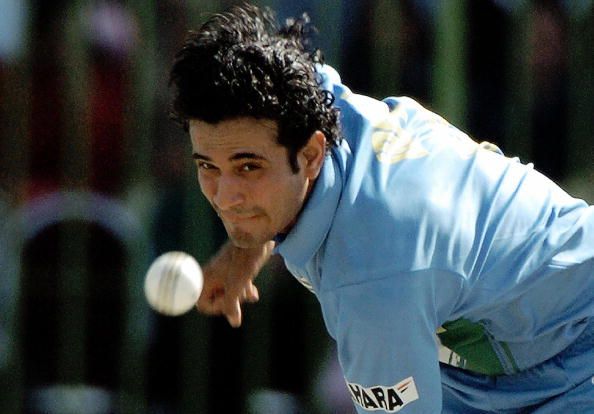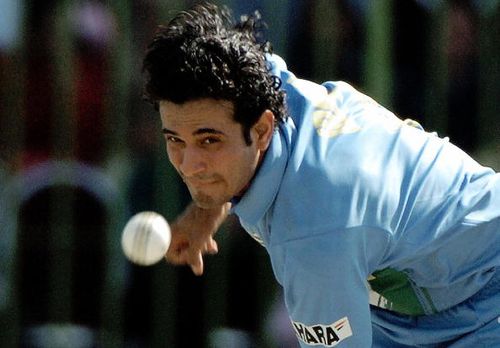
Irfan Pathan: A lost opportunity for Indian cricket

We must have heard this several times in cricket that, ‘it is very important for the coaches of every team to look after their players carefully or else they will perish’. It is true in every sense. Not just in cricket, it is a reality in life.
There are people in different fields who try their best to perform according to their fullest potential. Sometimes they succeed and sometimes they don’t. The important part is not that whether they perform or not, if they are talented, they should be motivated, given more opportunities and make them involved or else they will perish. Similar is a case with a ‘lost player’ of the Indian Cricket Team who was once a regular in the playing XI but today has minimum chance to board the flight for Australia and New Zealand in a few months time for the country’s title defence in World Cup 2015. He is none other than, the once regarded ‘blue-eyed boy’ of Team India, Irfan Pathan.
The rise and fall of Pathan has been shocking to see. He joined the Indian team in the Border-Gavaskar series in 2003-04 and was an instant attraction not only for the fans, but also for the selectors. He showed immense control in his bowling in difficult Australian conditions which are normally alien to our players.
The rise of Irfan Pathan
Beginning his career as he seam and swing bowler, he joined the team at the young age of 19 and was soon compared to the Pakistani great Wasim Akram for his performances and prodigious swing. He had the quality to swing the bowl away from the right handers and was deadly in swing conditions abroad. He was impressive in the CB Series played Down Under, providing the vital breakthroughs whenever Sourav Ganguly brought him into the attack. He caused problems to Pakistan when India toured them for ODIs and Tests in 2004.
He had dismissed quality players like Steve Waugh, Andrew Symonds, Ricky Ponting, Inzamam-ul-Haq, Younis Khan and many more with some deadly reserve swinging deliveries. He was lethal with his outswingers as well as with his in-swinging yorkers. No one can forget the delivery he bowled to Adam Gilchrist, an in swinging yorker to get rid of the Australian legend. It became the highlight of the tour for India. He had the ability to swing the ball both ways and was rising to the pinnacle of success rapidly.
Then, in 2006, he became the first player to take a hat-trick in a Test match against Pakistan. With outswingers and in-swingers, the ball was doing all the talking and he made batting really tough for Pakistan. Following his success in Australia, Sri Lanka and Pakistan, he had made himself an integral part of the bowling attack. But destiny had some other plans for him. Just like the other Indian fast bowlers who have always been a victim of injuries, he joined the same league in a few years. After enjoying initial success with the team, the road to success eluded Pathan for years/
The Greg Chappell era
The infamous ‘Chappell era’ has always been a talking point of Indian cricket. It is regarded as the ‘mysterious period’ in Indian cricket. Too much was happening in the team. There was a spat between the then captain, Sourav Ganguly and the coach. Chappell didn’t have the support of the fans as well. He constantly shifted Sachin Tendulkar’s batting position. Players like Virender Sehwag and Harbhajan Singh had expressed their concerns over Chappell’s over-experimenting nature. But, in my opinion, the biggest blunder made by Chappell was experimenting with Irfan Pathan’s career by promoting him to bat up the order.
To experiment at times is good but to try too many things results in chaos. This was the reason India performed horribly in the 9th edition of the World Cup held in West Indies. He was made to open the innings, come at No.3 position at times. Since he succeeded, he became a permanent member of the top order. For some time, he was able to manage both things properly, i.e. bowling and batting. But after some matches, it was noticed that he was losing his pace and consistency. He started becoming expensive in his spells and gradually lost his rhythm.
Former great Javagal Srinath had raised concerns over his form and maintained that his first priority is to bowl and then try his hand in batting. He was playing a lot of matches and this resulted in fatigue and caused his slide from the top. He was steadily declining from his prime and the ball was not moving both ways. His pace dropped, he became a little expensive and was excluded from the team at the back of some poor performances against England, West Indies and the ICC Champions Trophy in 2006.
Pathan’s career off late
Since then, he has been coming ‘in and out’ of the Indian team. Several injuries at the wrong time, inconsistency, expensive spells kept him out of favour. He did manage to make a strong mark in the inaugural edition of the World T20 in 2007. He picked up wickets and was adjudged the man of the match in the final game against Pakistan. He continued to be an inconsistent performer with the ball despite gaining confidence in his batting. He made some worthy contributions down the order and India kept him in the line-up as a result of his valuable runs with the bat.
Whenever there was an option of playing only two frontline bowlers, he was always kept at bay. He made a comeback in 2012 when India toured Sri Lanka for a lone T20 and 5 ODIs. He was the leading wicket taker and was adjudged the man of the match in the one-off T20. His good form was back but injuries still got the better of him. Till date, his comeback trail is on and he is running out of time to feature in the World Cup squad.
Man management is very important in sports or else we may lose talented players at crucial times. Look at Kevin Peterson or instance. Similarly, Pathan had everything in his favour until Chappell’s overenthusiastic nature brought out the worst in him. Sure his batting improved, he won accolades as an all rounder, was compared to the great Kapil Dev, but in the process lost his most important skill and hence, lost his rhythm.
Had someone backed up him at the right time or given him a longer run, his story would have been different. He was confused as to what his role was in the team. Trying to make amends in his batting, he overlooked his bowling. He is regarded as the lost hero because he was a great cricketer in the making in his early days but completely lost the plot sometime after.
We still have to find a medium paced all rounder in the team who can bowl. Everyone knows that Pathan can do much more than this since he possesses immense talent. He needs to curb his injuries and somehow bring back his pace or maintain a steadier line and length. At the age of 30, things are really difficult for him.. Whatever happens, we will never be able to see the ‘Irfan Pathan of 2003-04’. His name may get lost among the shadows of other players in Indian cricket.